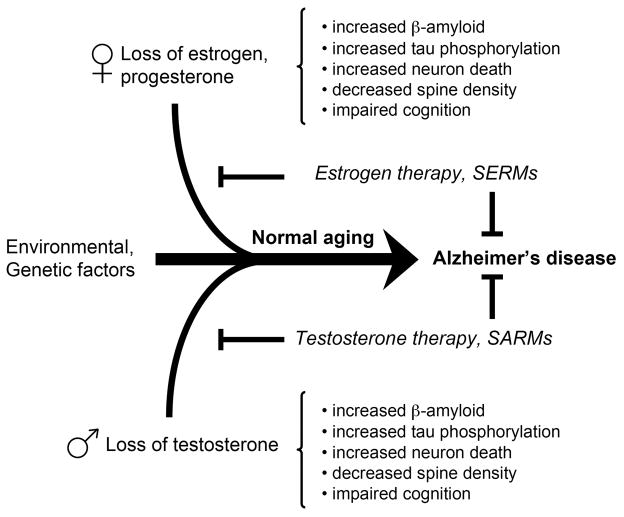Figure 1.
Interactions between age-related loss of sex hormones and risk of Alzheimer’s disease. AD pathogenesis is a multifactorial process. Lifetime exposure to a combination of identified genetic and environmental risk factors interacts with numerous normal age changes to cooperatively promote the development of AD. One important normal age change that is linked to dysfunction and disease in many tissues is loss of sex hormones, estrogens in women and testosterone in men. Age-related depletion of estrogens and testosterone may be particularly significant to development of AD since these sex hormones are established regulators of several events implicated in the disease, including beta-amyloid accumulation, tau phosphorylation, neuronal death and decreased spine density. Early intervention using estrogen- and testosterone-based therapies or synthetic hormone mimetics termed estrogen receptor modulators (SERMs) and androgen receptor modulators (SARMs) may restore lost protective functions and prevent AD.

